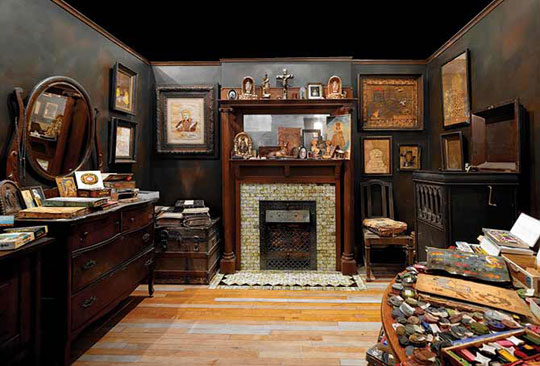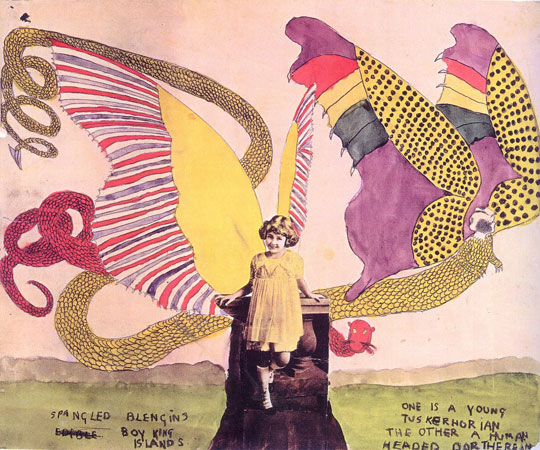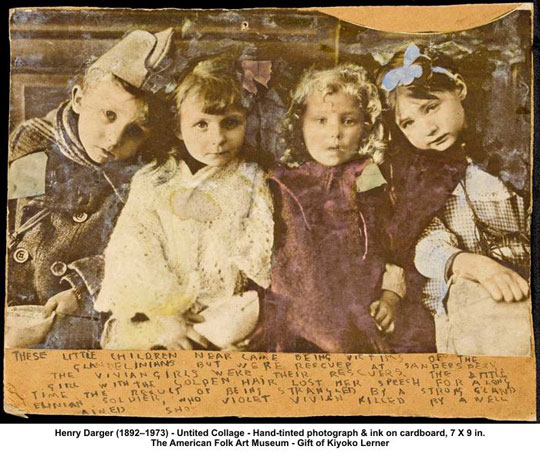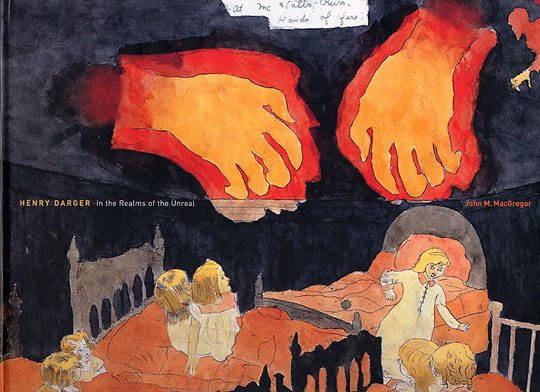Self-Taught Artist & Outsider Artist Henry Darger
Henry Darger has become one of the most influential ‘outsider’ artists of the 20th century. Sadly, he died without ever knowing how popular his work would become. Darger wrote what many describe as an epic tale centered around freeing children from slavery, his drawings and watercolor paintings visually depicting The Story of the Vivian Girls, in What is Known as the Realms of the Unreal, of the Glandeco-Angelinian War Storm, Caused by the Child Slave Rebellion.
Coined in 1972 by art critic Roger Cardinal, the term ‘outsider art’ is used to describe ‘raw’ or ‘rough’ art, even creative works developed by those in insane asylums, or who otherwise had little contact with the art world.
Born in Chicago in 1892, Darger’s mother gave birth to a daughter when Darger was just four years old; his mother died during childbirth, and he never knew his sister. When Henry was just 8 years old, his father, Henry Joseph Darger Sr., was placed at St. Augustine’s Catholic Mission home because he was impoverished and crippled. He died just five years later, essentially leaving Henry Jr. an orphan at the age of 13. Soon after, Henry was placed in an asylum in Lincoln, Illinois, and asylum designed for ‘feeble-minded’ children.
At the asylum he was subject to harsh punishments and forced labor and ultimately escaped a year before the asylum was investigated for abuse. Henry spent only three years in the asylum before escaping and going to work as a custodian in a Catholic hospital in 1908; this would be his job for the next 50 years, although his secret passion was writing and illustrating his manuscript. His manuscript, purported by some to be the “longest book ever written,” was more than 15,000 pages.
Living a hermit’s life, Darger produced hundreds of water-color illustrations of the world he had written about in his manuscript, a world some believed to exist only in Darger’s dreams. Darger’s images were often violent, even brutal, displaying the torture and murder of the children in his stories. They can also be very colorful, playful, sincere and innocent. Darger surely drew upon his life experiences in the asylum. His unique style has given rise to the term “Dargerism”.
This Video takes a Look Inside His Apartment
In creating his works of art, he relied largely on cheap paper and tools, some of his work including cardboard collages. Darger was known to draw on both sides of the cheap paper. John Jerit of Memphis owns American Paper Optics; as an art collector, he primarily collects works created by self-taught and outsider artists. Having a collection of Darger’s works, he said in a news article recently that he simply flips the pieces each year for display purposes.
Darger was considered a smart aleck as a teen, perhaps because he had to be an adult himself at such an early age. Dressing shabbily and collecting what some call a ‘bewildering’ array of trash taken from Chicago streets, this artist’s life can only be described as lonely and sad.
The American Folk Art Museum calls Darger “one of the most significant artists of the twentieth century”. His headstone is inscribed with “Protector of Children” and “Artist.” Some of his works are displayed today at the American Folk Art Museum and Museum of Modern Art in New York, the Art Institute of Chicago, New Orleans Museum of Art, and others.

Henry Darger Room Collection of Intuit: The Center for Intuitive and Outsider Art, Photo © John Faier.









